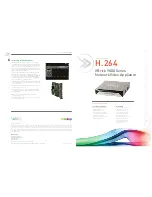
© 2010 Magnum Energy, Inc.
Electrical systems in mobile installations typically do not require using
a DC disconnect, although an overcurrent protection device is still
required. Because the DC disconnect is not required, a fuse is usually
used as the disconnect device in these installations. These installations
also do not normally use conduit, so the fuse must be installed in the
ungrounded conductor (usually the positive DC cable line) within 18
inches of the battery – to protect the DC wiring system.
If using a fuse, we recommend using a
class-T type or equivalent.
This fuse type is rated for DC operation, can
handle the high short-
circuit currents, and
allows for momentary current surges from the
inverter without opening.
DC Grounding
The inverter/charger should always be connected to a permanent,
grounded wiring system.
The idea is to connect the metallic chassis
of the various enclosures together to have them at the same voltage
potential, which reduces the possibility for electric shock.
For the
majority of installations, the inverter chassis and the negative battery
conductor are connected to the system’s ground bond via a safety-
grounding conductor (bare wire or green insulated wire) at only one
point in the system. Per the NEC, the size for the grounding conductor
is usually based on the size of the overcurrent device used in the DC
system.
Refer to Table 1
to select the appropriate DC ground wire
based on the overcurrent device used for your inverter model.
If the inverter is in a vehicle, DO NOT connect the battery negative
(-) cable to the vehicle’s safety ground. Only connect to the inverter’s
negative battery terminal. If there are any non-factory installed
appliances onboard the vehicle, DO NOT ground them at safety
ground. Only ground them at the negative bus of the DC load center
(as applicable).
Table 2, DC Wire Size For Increased Distance
Minimum recommended DC wire size (one way)
3 ft or less
3 to 5 ft
5 to 10 ft
10 to 15 ft
MMS1012
#1/0 AWG
#1/0 AWG
#2/0 AWG
#4/0 AWG
MMS1012-G
# 1/0 AWG
#1/0 AWG
#2/0 AWG
#4/0 AWG
2.0 Installation
16















































